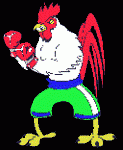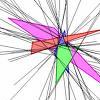Lurker turned poster here, with my first inquiry for all of you wise folks...
I received my first PSG results today and I'm having trouble swallowing the results given all I've read around here. Any insight would be greatly appreciated.
Here's the basics - if you need more details, feel free to ask:
0 apneas
1 central apnea
268 hypopneas
in 134 minutes, for a grand total AHI of 120.4.
That's when the doctor said the "off the charts" comment. Anyone else around here seen anything like this?
Needless to say, I have the DME appointment next week and am eagerly looking forward to starting treatment.
Thanks in advance!
AHI "Off the charts" says the doc
- SoundlyAsleep
- Posts: 3
- Joined: Mon May 05, 2008 8:24 pm
I wonder if all those hypopnea are from shallow breathing? Does the report say anything about the technician that scored your PSG? Did he happen to comment on how your night went?
lot more data than that found on a PSG, this might help you understand what some of it says:
DEFINITIONS:
APNEA = cessation of airflow for 10 seconds or greater.
HYPOPNEA =>50% decrease in airflow for 10 seconds or greater with a decrease in oxygen saturation of >3%.
APNEA/HYPOPNEA INDEX (AHI) = apnea plus (+) HYPOPNEA/hour of sleep.
RESPIRATORY AROUSAL INDEX (RAI) = AHI +snoring related EEG arousals/hour of sleep.
AHI/RAI** Scale =<5 events /hour = (none); 5-15 events/hour = (mild); 15-30 events/hour = (moderate); >30 events/hour = (severe).
Respiratory related sleep fragmentation: Sleep arousals due to respiratory events or snoring.
Desaturation = Drop in O2 oximetry distribution saturation by 3% below average saturation.
SaO2 scale: >89%=(none); 85-89%=(mild);80-84%=(moderate); <80% (severe).
EPWORTH SLEEPINESS SCALE =<10=(does not indicate EDS (Excessive Daytime Somnolence));10-15=(indicates daytime somnolence-not excessive);>16 (indicates EDS).
RESPIRATORY EFFORT RELATED AROUSALS (RERAs)=Sleep Arousals due to respiratory events characterized by pressure flow limitations in the airflow indicator channel without significant O2 desaturations.
StageIII and StageIV are combined and referred to as Deep Sleep.
Sleep Efficiency = Normal is >80%
As established by AASM/ABSM 1999.
Normal Sleep Architecture:
Stage1: 5%
Stage2: 50%
Stage3: 10%
Stage4: 10%
Stage REM: 25%
Stage3&4, REM decrease as we age.
Stuff seen on a PSG Report:
Arousal: An interruption of sleep lasting greater than 3 seconds.
BR Arousal index: The number of breathing related arousals(apnea, hypopnea, snoring & RERAs)multiplied by the # hours of sleep.
Bruxism: Grinding of the teeth.
Central apnea: A respiratory episode where there is no airflow and no effort to breathe lasting greater than 10 seconds.
EEG/EOG: Comments about sleep stages, brain waves (EEG), or eye movements (EOG)
EKG/ECG: Comments about heart rate, abnormal heart beats, etc.
EMG: Comments about leg movements and or teeth grinding (bruxism).
Hypopnea: A respiratory episode where there is partial obstruction of the airway lasting greater than 10 seconds. Also called partial apnea or hypo-apnea.
Non-supine: Sleeping in any position other than on the back.
NSR: Normal sinus rhythm.
NPSG: Nocturnal Polysomnogram, or sleep study.
(#)Number of Awakenings: The number of pages scored as wake after sleep onset.
Obstructive apnea: A respiratory episode where there is a complete cessation of airflow lasting greater than 10 seconds.
PLMs: Periodic limb movements.
PLM arousal index: The number of periodic limb movements that cause arousals multiplied by the number of hours of sleep.
PSGT: Polysomnographic technologist.
REM latency: Latency to REM(dreaming) from sleep onset.
RERAs: Respiratory effort related arousals. Episodes that are not apneas or hypopneas, often related to loud snoring, that generally do not cause a decrease in oxygen saturation.
Respiratory: Any specific comments about respiratory events.
RPSGT: Registered polysomnographic technologist.
Sleep efficiency: Total sleep time multiplied by time in bed.
Sleep latency: The first 30 seconds (one `epoch' of recording time) of sleep.
Sleep onset: The first 90 seconds (3 `epochs) of uninterrupted sleep.
Sleep stage shifts: The number of incidents of sleep stage changes.
Snoring intensity: Level of snoring loudness determined by the sleep technologist. Ranging in degrees from mild to very loud snoring.
Spontaneous arousal index: The number of spontaneous arousals (e.g. arousals not related to respiratory events, limb movements, snoring, etc) multiplied by the number of hours of sleep.
Stage 1: The lightest stage of sleep. Transitional stage from wake. top
Stage 1 shifts: The number of times the sleep stage changed to stage 1.
Stage 2: The first true stage of sleep.
Stages 3/4: The deepest, most restorative sleep.
Stage REM: The dreaming stage; Normally occurs every 60-90 minutes.
Supine: Sleeping on back.
Time in bed: The time in the study from `Lights Out' to `Lights On'.
Total arousal index: Total number of all arousals multiplied by the number of hours of sleep.
Total # of PLMs: The number of leg movements in sleep that last greater than 0.5 seconds.
Total sleep time: Total time asleep.
WASO: Wakefulness after sleep onset.
WNL: Within normal limits.
======================================================================
_________________
CPAPopedia Keywords Contained In This Post (Click For Definition): Arousal, AHI, Polysomnogram, Hypopnea, Bruxism
lot more data than that found on a PSG, this might help you understand what some of it says:
DEFINITIONS:
APNEA = cessation of airflow for 10 seconds or greater.
HYPOPNEA =>50% decrease in airflow for 10 seconds or greater with a decrease in oxygen saturation of >3%.
APNEA/HYPOPNEA INDEX (AHI) = apnea plus (+) HYPOPNEA/hour of sleep.
RESPIRATORY AROUSAL INDEX (RAI) = AHI +snoring related EEG arousals/hour of sleep.
AHI/RAI** Scale =<5 events /hour = (none); 5-15 events/hour = (mild); 15-30 events/hour = (moderate); >30 events/hour = (severe).
Respiratory related sleep fragmentation: Sleep arousals due to respiratory events or snoring.
Desaturation = Drop in O2 oximetry distribution saturation by 3% below average saturation.
SaO2 scale: >89%=(none); 85-89%=(mild);80-84%=(moderate); <80% (severe).
EPWORTH SLEEPINESS SCALE =<10=(does not indicate EDS (Excessive Daytime Somnolence));10-15=(indicates daytime somnolence-not excessive);>16 (indicates EDS).
RESPIRATORY EFFORT RELATED AROUSALS (RERAs)=Sleep Arousals due to respiratory events characterized by pressure flow limitations in the airflow indicator channel without significant O2 desaturations.
StageIII and StageIV are combined and referred to as Deep Sleep.
Sleep Efficiency = Normal is >80%
As established by AASM/ABSM 1999.
Normal Sleep Architecture:
Stage1: 5%
Stage2: 50%
Stage3: 10%
Stage4: 10%
Stage REM: 25%
Stage3&4, REM decrease as we age.
Stuff seen on a PSG Report:
Arousal: An interruption of sleep lasting greater than 3 seconds.
BR Arousal index: The number of breathing related arousals(apnea, hypopnea, snoring & RERAs)multiplied by the # hours of sleep.
Bruxism: Grinding of the teeth.
Central apnea: A respiratory episode where there is no airflow and no effort to breathe lasting greater than 10 seconds.
EEG/EOG: Comments about sleep stages, brain waves (EEG), or eye movements (EOG)
EKG/ECG: Comments about heart rate, abnormal heart beats, etc.
EMG: Comments about leg movements and or teeth grinding (bruxism).
Hypopnea: A respiratory episode where there is partial obstruction of the airway lasting greater than 10 seconds. Also called partial apnea or hypo-apnea.
Non-supine: Sleeping in any position other than on the back.
NSR: Normal sinus rhythm.
NPSG: Nocturnal Polysomnogram, or sleep study.
(#)Number of Awakenings: The number of pages scored as wake after sleep onset.
Obstructive apnea: A respiratory episode where there is a complete cessation of airflow lasting greater than 10 seconds.
PLMs: Periodic limb movements.
PLM arousal index: The number of periodic limb movements that cause arousals multiplied by the number of hours of sleep.
PSGT: Polysomnographic technologist.
REM latency: Latency to REM(dreaming) from sleep onset.
RERAs: Respiratory effort related arousals. Episodes that are not apneas or hypopneas, often related to loud snoring, that generally do not cause a decrease in oxygen saturation.
Respiratory: Any specific comments about respiratory events.
RPSGT: Registered polysomnographic technologist.
Sleep efficiency: Total sleep time multiplied by time in bed.
Sleep latency: The first 30 seconds (one `epoch' of recording time) of sleep.
Sleep onset: The first 90 seconds (3 `epochs) of uninterrupted sleep.
Sleep stage shifts: The number of incidents of sleep stage changes.
Snoring intensity: Level of snoring loudness determined by the sleep technologist. Ranging in degrees from mild to very loud snoring.
Spontaneous arousal index: The number of spontaneous arousals (e.g. arousals not related to respiratory events, limb movements, snoring, etc) multiplied by the number of hours of sleep.
Stage 1: The lightest stage of sleep. Transitional stage from wake. top
Stage 1 shifts: The number of times the sleep stage changed to stage 1.
Stage 2: The first true stage of sleep.
Stages 3/4: The deepest, most restorative sleep.
Stage REM: The dreaming stage; Normally occurs every 60-90 minutes.
Supine: Sleeping on back.
Time in bed: The time in the study from `Lights Out' to `Lights On'.
Total arousal index: Total number of all arousals multiplied by the number of hours of sleep.
Total # of PLMs: The number of leg movements in sleep that last greater than 0.5 seconds.
Total sleep time: Total time asleep.
WASO: Wakefulness after sleep onset.
WNL: Within normal limits.
======================================================================
_________________
CPAPopedia Keywords Contained In This Post (Click For Definition): Arousal, AHI, Polysomnogram, Hypopnea, Bruxism
someday science will catch up to what I'm saying...
Welcome to the forum!
While your numbers are indeed alarming, you are fortunate that you're now on the road to a much healthier night's sleep. Some of us (before treatment) had events lasting more than a minute, and our oxygen level got down to the low seventies. So a really high number of hypopneas might be comparable to a lower number with longer duration.
Good luck with your therapy, and be sure to post your questions and issues as they arise so you stay on track!
Take Care,
Cathy
While your numbers are indeed alarming, you are fortunate that you're now on the road to a much healthier night's sleep. Some of us (before treatment) had events lasting more than a minute, and our oxygen level got down to the low seventies. So a really high number of hypopneas might be comparable to a lower number with longer duration.
Good luck with your therapy, and be sure to post your questions and issues as they arise so you stay on track!
Take Care,
Cathy












